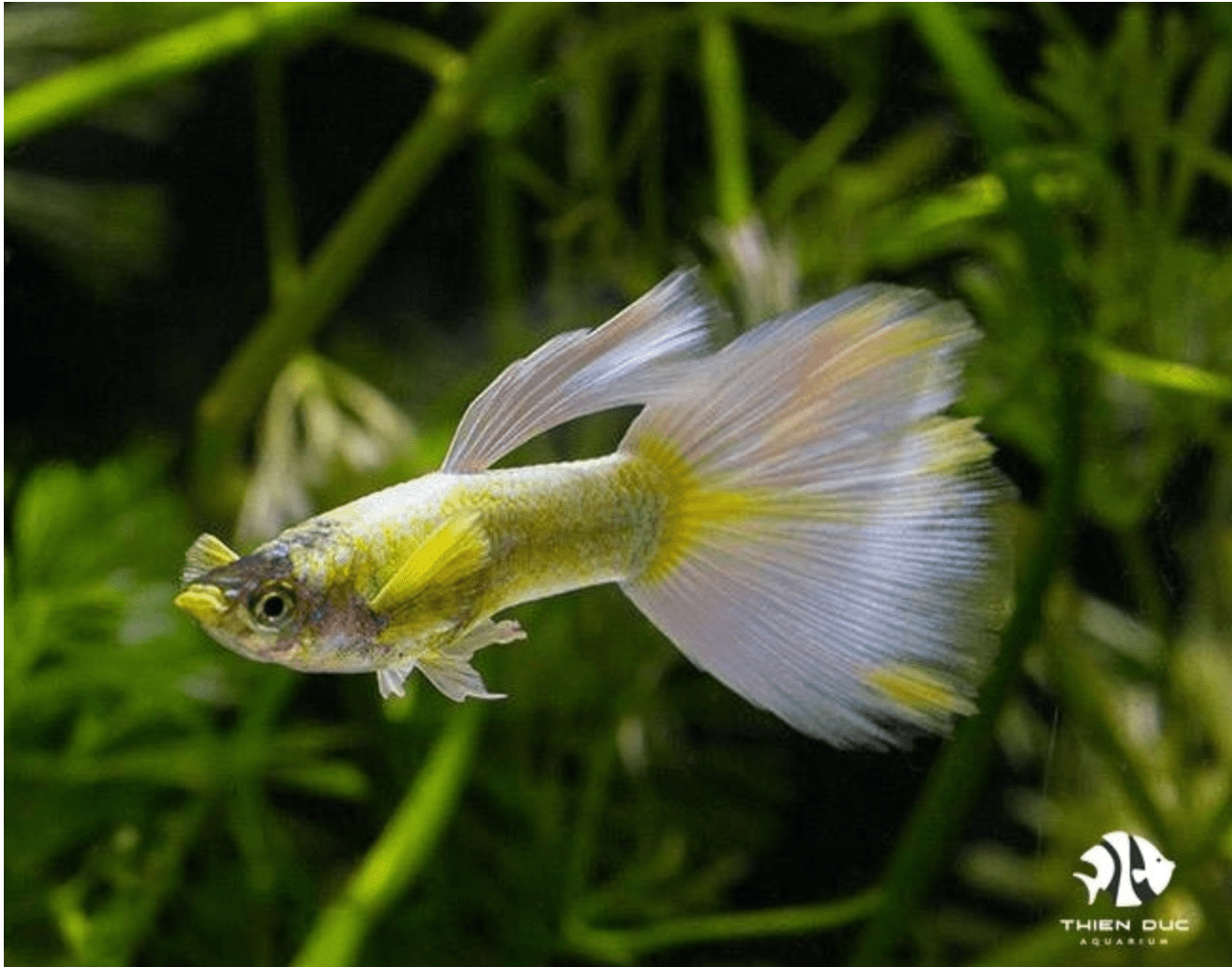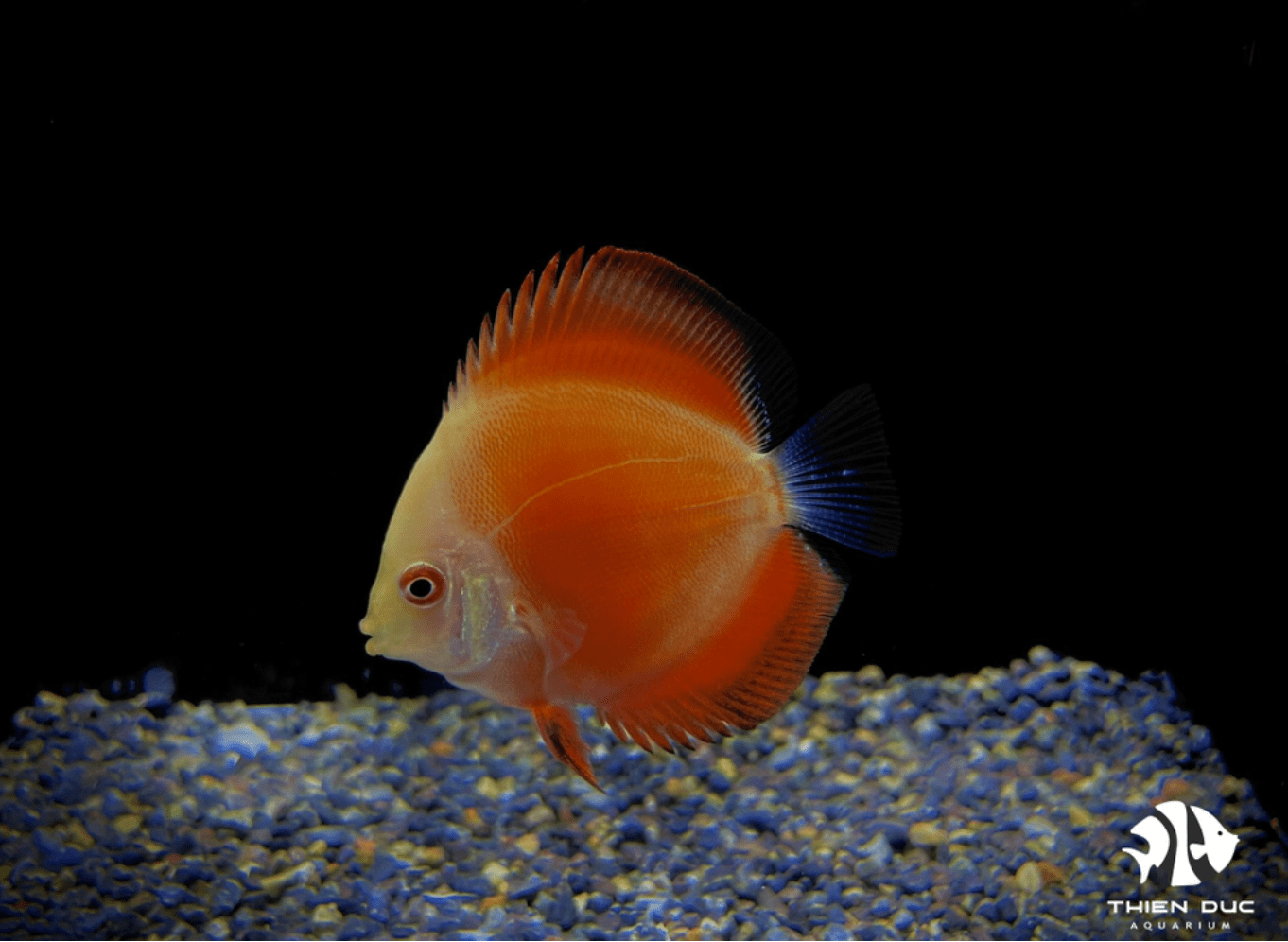Discus Fish Genetics: How Breeding Creates Perfect Specimens
The mesmerizing grace of a show-quality Discus, with its kaleidoscope of colors and regal form, is a sight to behold. This living masterpiece is not a product of chance, but the culmination of dedicated artistry and a profound understanding of science. At ThienDuc Aquarium, we know this beauty is meticulously crafted through the precise application of Discus fish genetics. This article will unveil the intricate principles breeders use to transform a humble aquatic creature into a breathtaking specimen, revealing the blueprint that lies hidden within their DNA.
The Foundation: Understanding the Building Blocks of Symphysodon Genetics
Before a breeder can create a living work of art, they must first understand the raw materials. In this case, the material is the genetic code that dictates every aspect of the fish's existence. The field of Symphysodon genetics provides the rulebook for how traits are passed down from one generation to the next. At its core, this involves understanding a few key concepts. Every trait—from the deep, solid blue of a Cobalt to the intricate red lines of a Turquoise—is controlled by genes, which are segments of DNA. These genes act as a blueprint for the fish's development.

To navigate the world of breeding, it's essential to grasp some basic terminology:
-
Genotype: This refers to the actual genetic makeup of the fish. It’s the complete set of genes an individual carries, including those that aren't visibly expressed.
-
Phenotype: This is the physical, observable expression of the genotype. It's what you see: the fish's color, pattern, body shape, and fin length. A fish might carry a recessive gene for albinism (genotype) but appear brown because it also has a dominant gene for brown coloration (phenotype).
-
Allele: These represent distinct forms of the same gene. For example, a gene for body pattern might have an allele for vertical stress bars and another allele for fine-line striations.
Every domestic Discus strain available today owes its existence to the wild Discus found in the Amazon basin. These wild ancestors—the Heckel, Brown, Green, and Blue Discus—provide the foundational genetic canvas. Their robust DNA is the source of all the traits breeders have refined over decades. At THIENDUC AQUARIUM, our deep experience with wild-caught fish gives us a unique appreciation for this raw genetic diversity, which is the key to developing healthy and vibrant new discus fish strains. A solid understanding of these fundamentals is the first step in mastering Discus fish genetics.
The Breeder's Art: Mastering Selective Breeding to Shape Perfection
Knowing the theory of genetics is one thing; applying it is another entirely. Selective breeding discus is where art and science converge. It is the active process through which breeders guide the evolution of their fish, choosing specific parents to produce offspring with desired traits. This methodical process allows breeders to enhance colors, refine patterns, and improve body forms over generations. It is a testament to patience and a deep understanding of Discus fish genetics.

Decoding Dominant vs. Recessive Genes in Discus Color Variations
One of the most critical concepts in Discus fish genetics is the interplay between dominant and recessive genes. A dominant gene will express its trait even if only one parent passes it on. A recessive gene, however, requires two copies (one from each parent) to be visible in the offspring.
-
Dominant Trait Example: The iconic Pigeon Blood strain is a perfect illustration. The gene responsible for its bright orange-red base and lack of vertical stress bars is dominant. When a Pigeon Blood is crossed with a classic striped Discus, many offspring will display the Pigeon Blood's characteristics. This dominance is a powerful tool in Discus fish genetics.
-
Recessive Trait Example: On the other end of the spectrum are strains like the Blue Diamond or Snow White. Their stunning, solid coloration is the result of a recessive gene. To produce Blue Diamond offspring, both parents must carry the recessive gene. If two pure Blue Diamonds are bred together, 100% of their fry will be Blue Diamonds, demonstrating the predictability of recessive Discus fish genetics.
Proven Breeding Strategies for Desired Outcomes
Breeders employ several time-tested strategies to achieve their goals, each with its own benefits and considerations. Mastering these techniques is essential for anyone serious about improving their stock.
-
Line Breeding: This involves breeding closely related fish, such as a father to a daughter or cousins. The goal is to "fix" a desirable trait, making it consistently appear in future generations. For example, a breeder might use line breeding to perfect a high, round body shape. While effective, it requires careful management to avoid inbreeding depression, where negative traits can become amplified. This strategy is a cornerstone of advanced Discus fish genetics.
-
Outcrossing: This is the practice of breeding two unrelated strains. Outcrossing is used to introduce new genetic material, increase vitality (known as hybrid vigor), and develop entirely new discus color variations. This is how many of today's most incredible strains were born. It is the most exciting and unpredictable aspect of working with Discus fish genetics.
-
Culling: A crucial part of any breeding program is the selection process. Culling involves carefully choosing the best fry from a spawn—those that most closely match the breeder's goals—to raise and continue the line. This ensures that only the strongest and most desirable genes are passed on, consistently improving the quality of the strain over time.
Case Study: The Genetics of Iconic Discus Fish Strains
To see these principles in action, let's look at the genetic history of two famous strains.
-
The Red Turquoise: This classic strain is a product of decades of selective breeding, originating from wild Discus. Breeders carefully selected fish with the most intense red and blue striations, using line breeding to make the pattern more refined and vibrant. The result is a fish with a perfect balance of color that remains a hobbyist favorite, all thanks to a targeted application of Discus fish genetics.
-
The Pigeon Blood: Developed in the 1990s, the Pigeon Blood revolutionized the hobby. It originated from a single mutation that eliminated the vertical stress bars and produced a golden-orange base color. The discovery that this trait was dominant allowed for creating new discus strains at an unprecedented rate, as breeders could cross it with almost any other variety.

Pro-Tip from THIENDUC AQUARIUM: When attempting an outcross, always begin with healthy, robust parent fish from a reputable source. Strong foundational genetics drastically reduce the risk of deformities and significantly increase your chances of creating a successful, vibrant new strain. This initial investment in quality is paramount in the world of Discus fish genetics.
Summary: The Art and Science of Discus Fish Genetics
From the basic building blocks of DNA to the hands-on application of selective breeding, the journey of creating a perfect Discus is both long and rewarding. The stunning array of fish available today is a direct result of dedicated breeders who have spent years mastering the intricate rules of Discus fish genetics. It is a discipline that demands scientific knowledge, artistic vision, and unwavering patience. At THIENDUC AQUARIUM, cultivating this balance of art and science is a passion we have proudly pursued for over a decade, continually pushing the boundaries of what is possible.
Contact Information
For consultation or to source high-quality freshwater and marine ornamental fish with proven genetics, please contact us:
-
Address: 57 Le Thi Sieng, Tan Thong Hoi, Cu Chi, Ho Chi Minh City, Viet Nam
-
Mobile: +84903912501
-
Office: +84982577871
-
Email: thien@thienducaquarium.com










